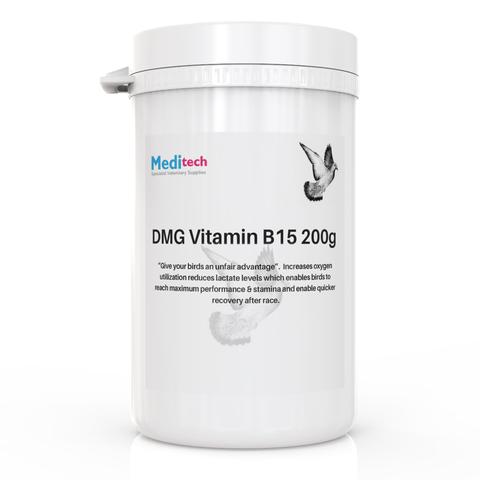Dmg Supplement Vs Tmg
Trimethylglycine (TMG), commonly known as betaine, is naturally produced in the body to diminish hazardous homocysteine levels. Researches have suggested that TMG, along with other nutrients, helps to reduce potentially toxic levels of homocysteine a naturally occurring amino acid that can be harmful to blood vessels thereby contributing to the development of heart disease, stroke, and peripheral vascular illness. Trimethylglycine works closely with other methyl donors including choline, vitamin B12,folic acid and SAMe, and is in addition a precursor of carnitine synthesis.

Trimethylglycine helps convert homocysteine to methionine by donating a methyl group. The process is called methylation, because a methyl group detaches from a “donor” molecule and attaches onto the homocysteine molecule, converting this potentially toxic amino acid back into methionine.
TMG consists of three methyl groups that are joined to one molecule of the amino acid glycine. When TMG is eaten in food or taken as a supplement, it releases one of the two methyl groups and leaves a substance called dimethylglycine or DMG along with glycine. Let’s talk about the benefits DMG and glycine.
DMG on the other hand is a byproduct of the minor/BHMT pathway, and taking DMG will likely result in suppressing it. So TMG and DMG have opposite effects although they're similar. Edited by rwac, 29 July 2011 - 05:23 AM. DMG (TMG ’s metabolite) has been used as a nutritional supplement for over 25 years. In a broad sense, TMG protects the body from many forms of physical, metabolic and environmental stress. Suggested Use for Healthy Adults: As a dietary supplements, 1 capsule once or twice daily as needed or as directed by your health care provider. Supplements Facts Panel for 1 Capsule: Proprietary Blend Providing 630mg: Anhydrous Betain (TMG), N,N-Dimethylglycine HCL (DMG), Yohimbe Bark Extract (proving 2.4 mg of Yohimbine), Serrapeptidase.
Once trimethylglycine work has been completed in decreasing homocysteine levels in the body, it becomes another substance known as DMG (dimethylglycine). In Russia, TMG/DMG is used extensively as an sporty performance enhancer, and it has also become popular among American athletes.
Trimethylglycine Benefits
Trimethylglycine is a important aid to reduce homocysteine production and encourage normal heart and liver function.
Homocysteine
Homocysteine is an amino acid, formed as a result of methionine metabolism. Healthy people, homocysteine is converted back into methionine as part of a closed-loop regulatory mechanism that prevents homocysteine levels from becoming too high. The process is called methylation, because a methyl group detaches from a “donor” molecule and attaches onto the homocysteine molecule, converting this potentially toxic amino acid back into methionine. Having high amounts of homocysteine is related to a higher risk of heart illness and stroke. Also, various researches show that high levels of homocysteine may encourage hardening of the arteries.
Trimethylglycine serves as a methyl donor in a reaction converting homocysteine to methionine. Works with vitamin B-6, folic acid and vitamin B12 to help regulate homocysteine levels. Trimethylglycine (500 mg) was administered to healthy male subjects (19-40 years old) finding homocysteine levels were reduced 4 to 6 hours after intake. Analysts concluded TMG capability to augment L-methionine production decreased homocysteine concentrations. In another study, participants who consumed 360 mg of betaine had, on approximate, 10 percent lower concentrations of homocysteine and 19 percent lower concentrations of Creactive protein than did those who consumed 260 mg.
A 2009 study examined the effect of trimethylglycine on atherosclerotic lesion progression in apolipoprotein e-deficient mice. Compared with mice not treated with trimethylglycine following fourteen weeks, mice receiving 1%, 2%, or 4% TMG had 10.8%, 41%, and 37% less lesion areas, respectively. Trimethylglycine furthermore reduced aortic expression of the inflammatory cytokine, TNF-alpha, in a dose-dependent way. These findings suggest that in addition to its homocysteine lowering effect, trimethylglycine may also exert its anti-plaque property by inhibiting aortic inflammatory responses mediated by TNF-alpha.
Homocystinuria
Homocystinuria, an inherited condition in which the body cannot break down a certain protein, causing build-up of homocysteine in the blood. This condition is inherited in an autosomal recessive pattern, which means both copies of the gene in each cell have mutations. The Food and Drug Administration (FDA) approved anhydrous trimethylglycine (Cystadane) for the therapy of homocystinuria, a disease caused by abnormally high homocysteine levels at birth.
Dmg Supplement Vs Tmg Performance
Liver Health
Trimethylglycine, is a substance known as a methyl donor. Methyl molecule donation is important for liver and cells to function appropriately. In other words, TMG is necessary for ensuring appropriate liver function, cellular replication and detoxification reactions.
Dmg Supplement Vs Tmg Oil
Trimethylglycine may remedy in treating hepatitis, alcoholic fatty liver disease and nonalcoholic steatohepatitis. Works with folic acid, vitamin B12, folic acid, SAMe, (S-Adenosyl-L-methionine), and choline in your body to support normal liver health. In a trial, supplementation with betaine (20 g) for 12 months improved signs of liver inflammation in 7 patients with nonalcoholic steatohepatitis, a type of liver inflammation. No important adverse effects were seen.
Foods Containing Trimethylglycine
Broccoli, beets, spinach, grains, seeds and shellfish contain low amounts of trimethylglycine. But, most trimethylglycine in nutrient is destroyed during cooking or processing, therefore food isn’t a reliable way to get a effective dosage.
Trimethylglycine Dosage
Dmg Vs Tmg Supplement
Trimethylglycine supplements, are available in powder, capsule and tablet forms. These supplements, are manufactured as a byproduct of sugar beet processing. Trimethylglycine is generally taken with vitamin B6, folic acid, and vitamin B12. 6 grams of TMG per day is considered a effective dose in the reduction of high homocysteine levels. Choline (2 grams per day) and trimethylglycine (6 grams per day) have each been shown to lower homocysteine amounts. The maximum safe dosage of TMG supplement has not been determined for pregnant or nursing women, children, or those with severe kidney or liver illness.
